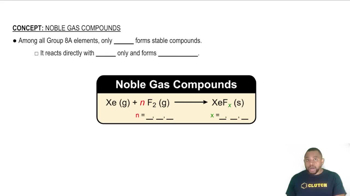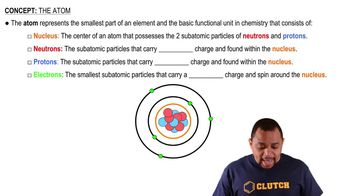Here are the essential concepts you must grasp in order to answer the question correctly.
Noble Gas Stability
Noble gases are characterized by having a complete valence shell, which makes them highly stable and unreactive. Helium and neon, being the lightest noble gases, have full outer electron shells that do not seek additional electrons, resulting in their inert nature. In contrast, heavier noble gases have larger atomic radii and can exhibit some reactivity under specific conditions, leading to the formation of compounds.
Recommended video:
Atomic Size and Reactivity
As you move down the periodic table, atomic size increases due to the addition of electron shells. This increase in size affects the reactivity of noble gases; heavier noble gases have more diffuse electron clouds, which can lead to interactions with other elements. The larger atomic radius can allow for some degree of polarization, enabling these gases to form weak bonds in certain compounds.
Recommended video:
Electronegativity and Bond Formation
Electronegativity is a measure of an atom's ability to attract and hold onto electrons. While noble gases generally have low electronegativity, heavier noble gases can exhibit slight electronegativity due to their larger size and the presence of more electrons. This allows them to engage in limited bonding with highly electronegative elements, resulting in the formation of a few stable compounds.
Recommended video:
 Verified step by step guidance
Verified step by step guidance

